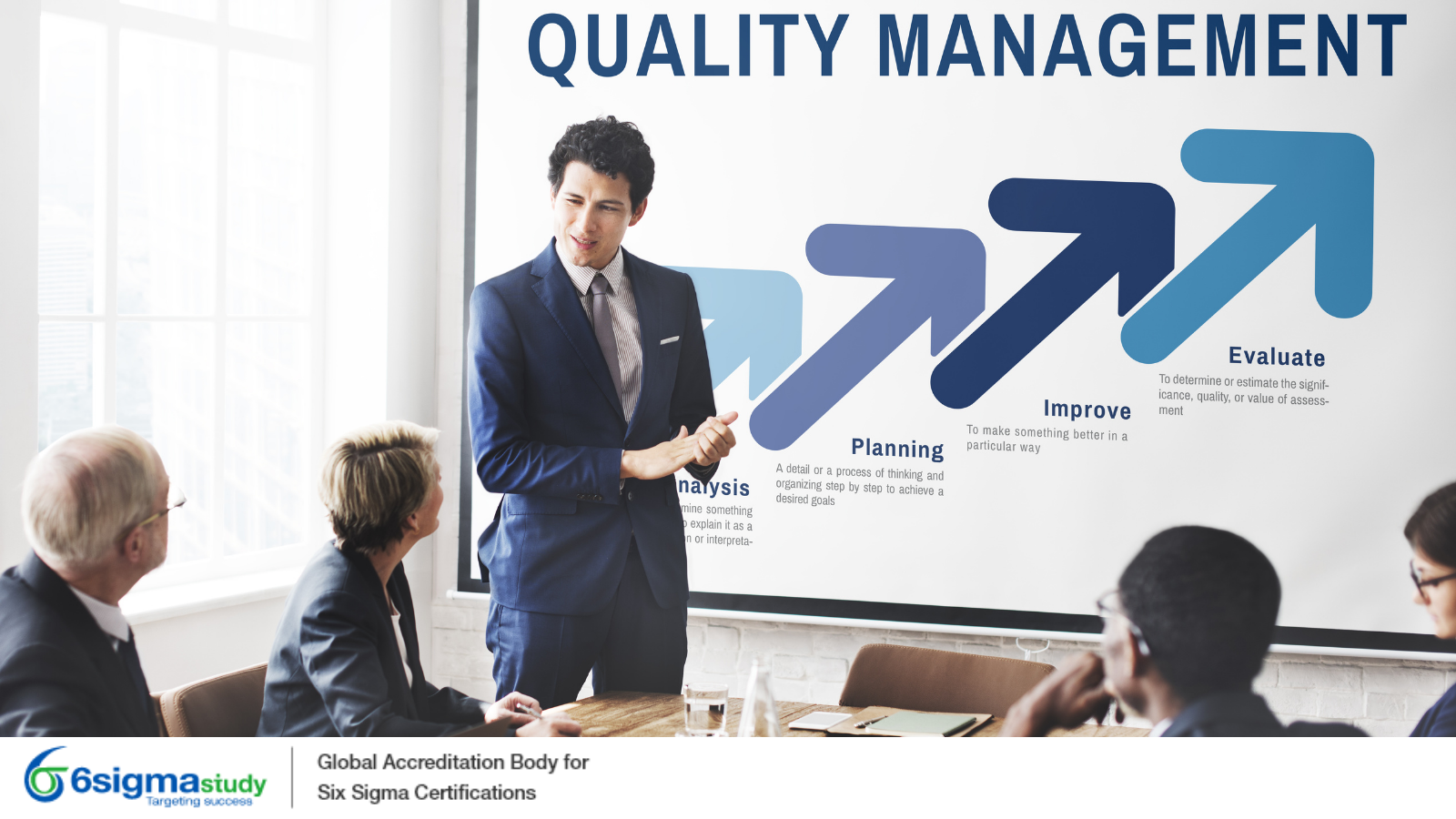Importance of Enterprise-Wide View for Quality Management
Posted by 6sigmastudy® on February 24, 2021 | Quality Management
Keywords: Six Sigma 6sigmastudy Six Sigma Yellow Belt (SSYB™) Six Sigma Green Belt (SSGB™) Six Sigma Black Belt (SSBB™) Lean Six Sigma Green Belt (LSSGB™) Lean Six Sigma Black Belt (LSSBB™) Free Articles Free Six Sigma Articles TQM Six sigma
The word ‘Enterprise’ is commonly used for a profit-making business or a company that consists of several employees and departments. The term ‘Enterprise-Wide’ signifies a process or a movement that is taking place throughout the enterprise. Thus enterprise-wide view for quality management approach is a holistic approach to influence and improve an organization’s products, processes, and customer satisfaction.
Six Sigma Continuous Improvement Principles:
If an organization wants to optimize productivity and customer satisfaction, it has to focus on appropriate integration of design, processes & control strategies, and continuous monitoring of variations in the processes. In the context of management, the term ‘Continuous improvement’ means the method of constantly identifying and eliminating the causes that prevent a system or process from functioning at its optimum level. It is one of the most important pillars of a data-driven Six Sigma methodology. The concept of continuous improvement originated in Japan in the 1970s. It was adopted in many countries, including the USA, in the early 1980s.
Continuous improvement and customer satisfaction is the principle on which the concept of Lean manufacturing is developed. Lean manufacturing is the result of combining continuous improvement principle with just-in-time technique. Continuous improvement helps an organization to add value to its products and services by reducing defects and mistakes, and maximize its potential.
As continuous improvement requires constant ongoing efforts, it is essential that the top management takes a long-term view and commits itself for its implementation. Continuous improvement enables organizations to identify and rectify problems as they occur. Thus, it ensures smooth functioning of the processes.
Value and Foundations of Six Sigma
Six Sigma approach in any enterprise can be viewed as a philosophy, a technique, or a goal.
Philosophy: as a customer-focused philosophy, Six Sigma aims to maximize profitability for customers.
Technique: as a comprehensive set of statistical tools such as statistical process control (SPC), control charts, failure mode and effects analysis (FMEA) and defined set of methodologies such as the DMAIC and DMADV approach, Six Sigma can be used as a technique to manage quality and optimize productivity.
Goal: as an objective, companies aim to achieve Six Sigma levels by reducing variation, minimizing defects, shortening the cycle time, improving yield, and enhancing customer satisfaction to boost the bottom line.
Six Sigma Approach
Six Sigma, as an approach, views all processes as something that can defined, measured, analyzed, improved, and controlled. It mainly focuses on finding out the root causes of the problem, symbolically represented by Y = F(X). Here, “Y” represents the problem that occurs due to cause(s) “X”.
For more interesting articles visit here.

